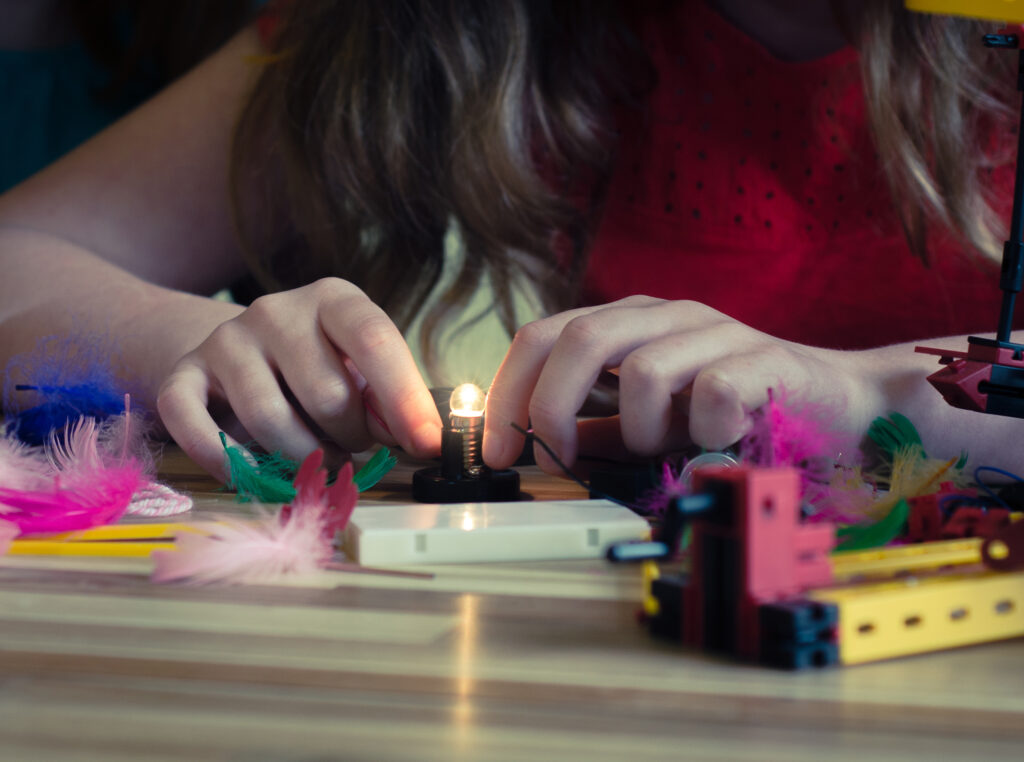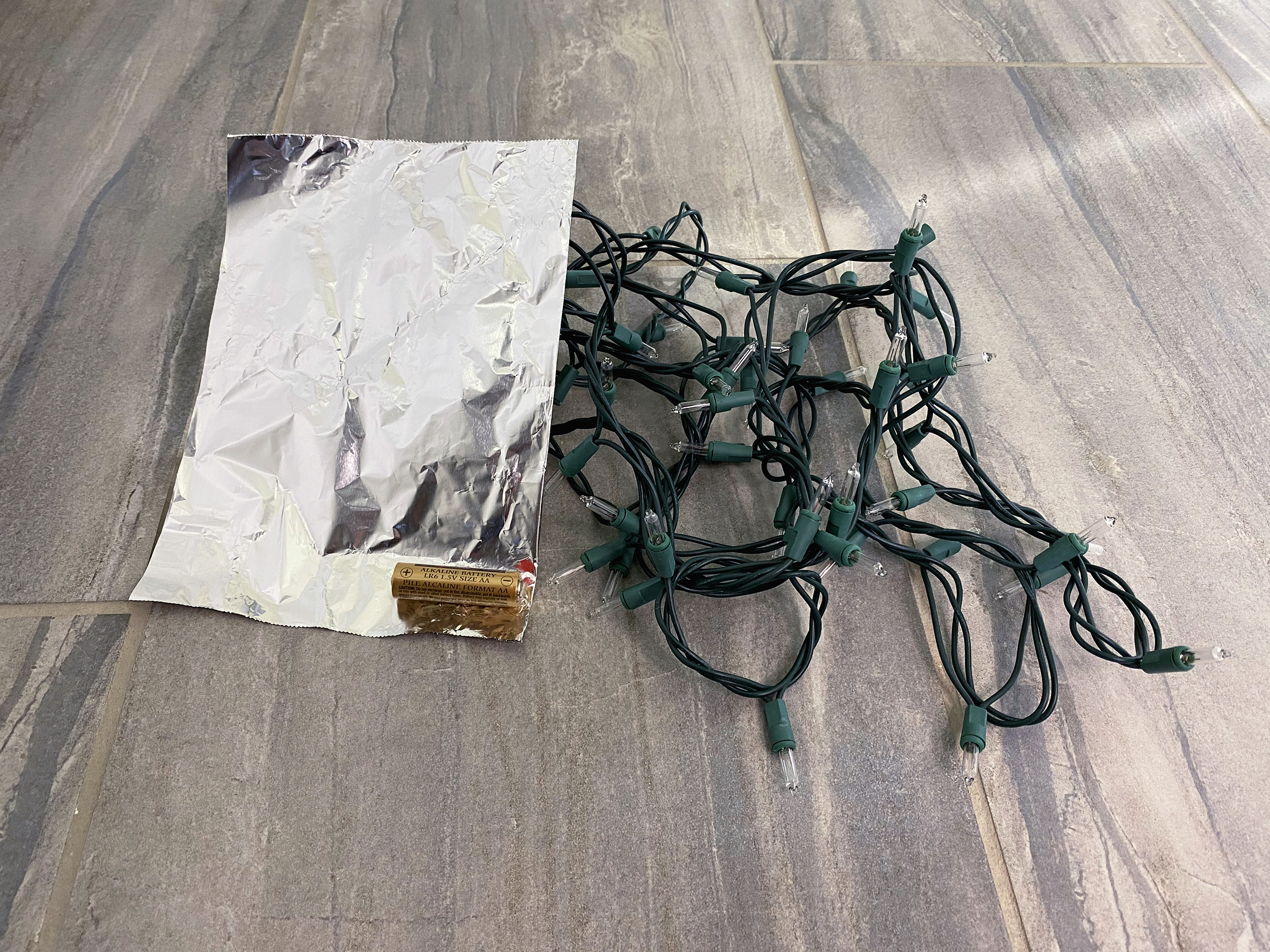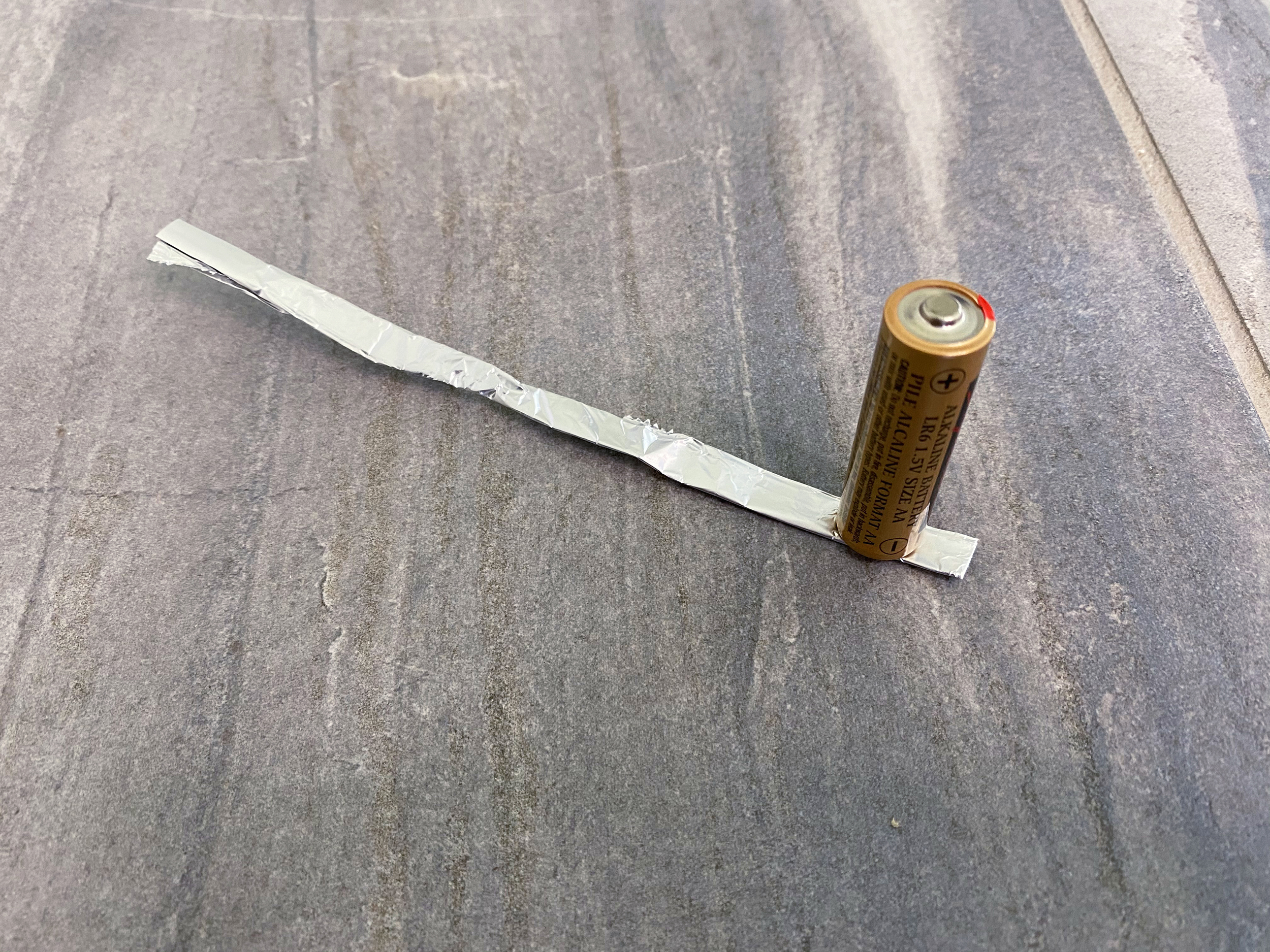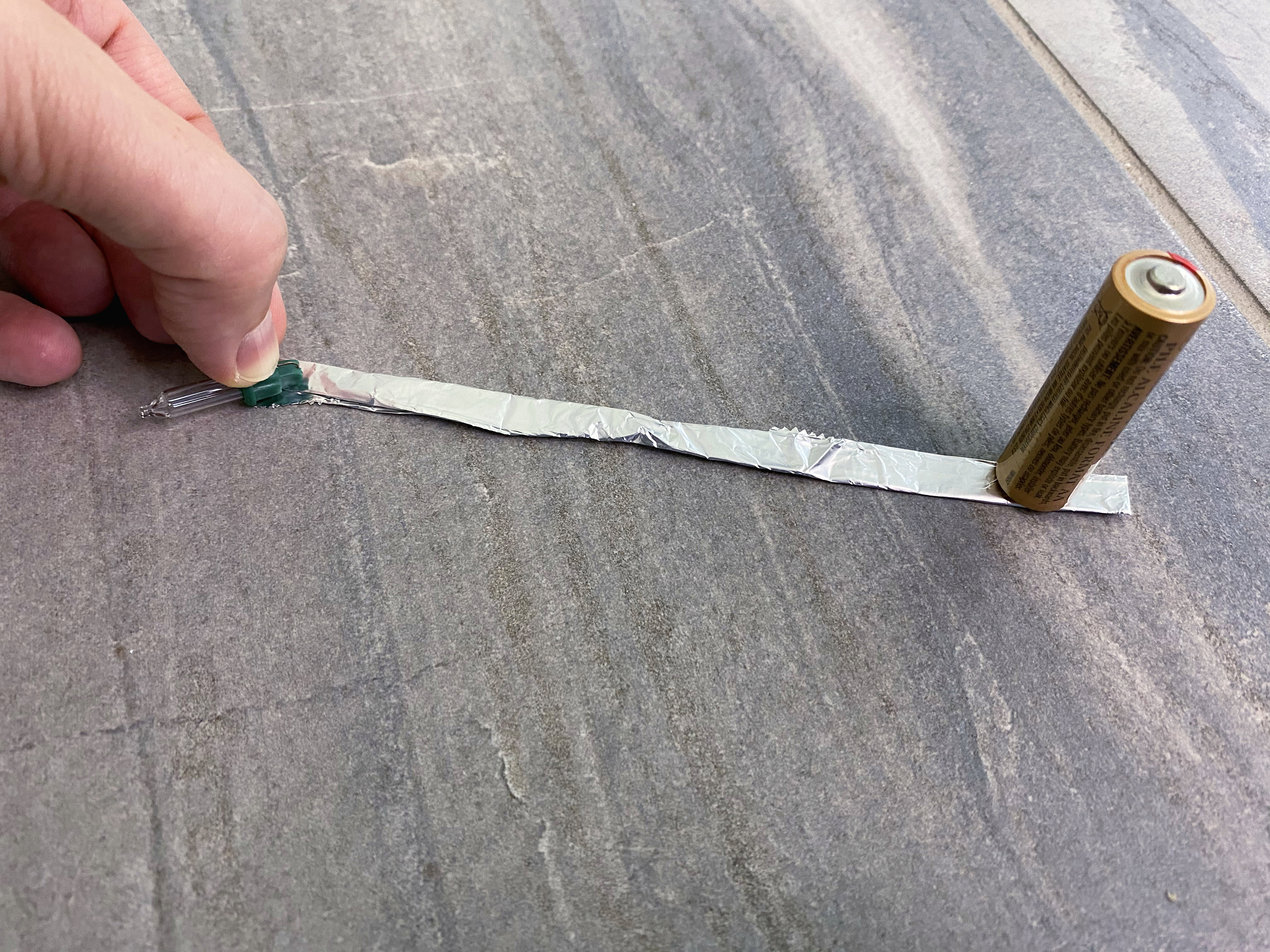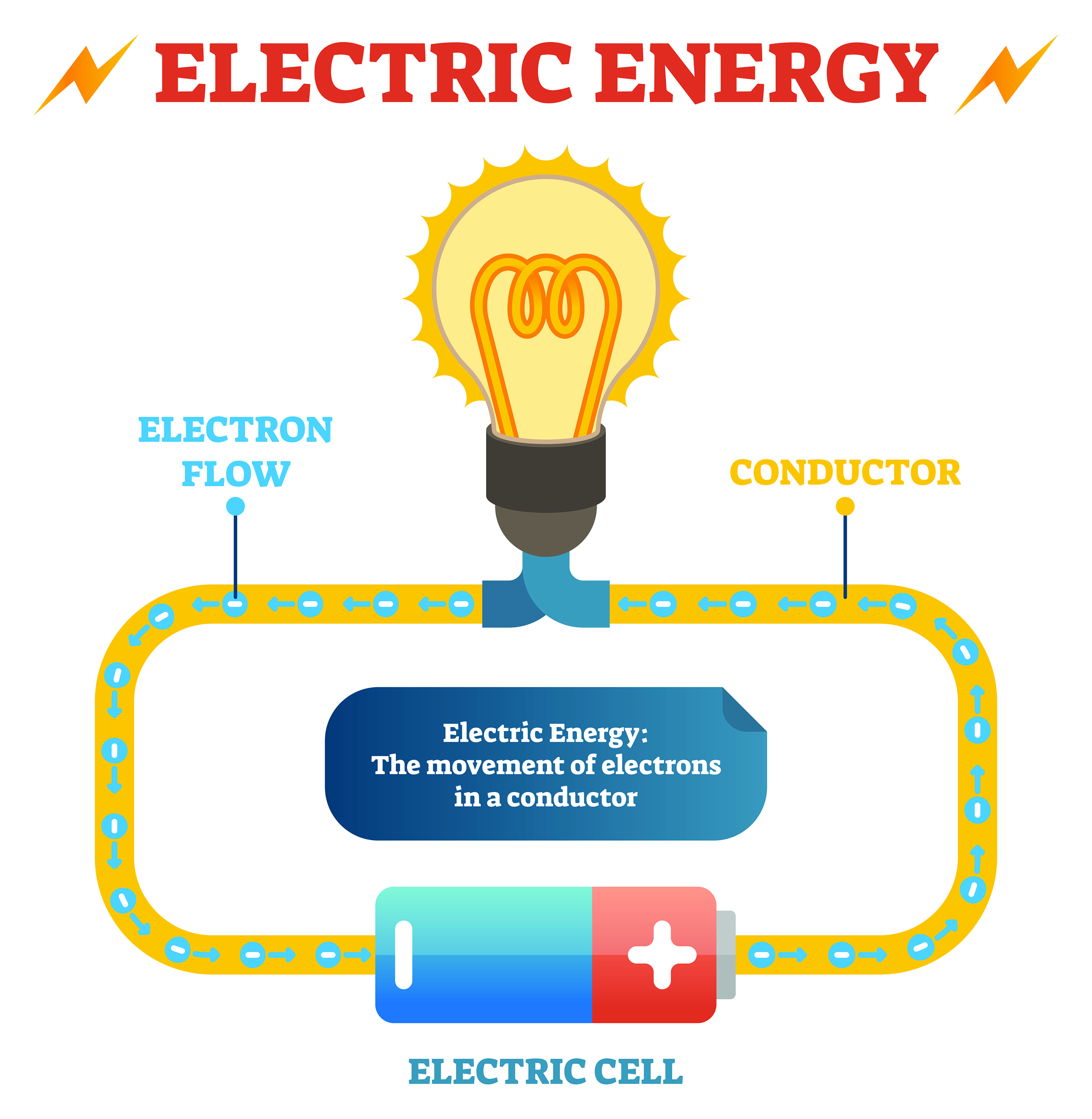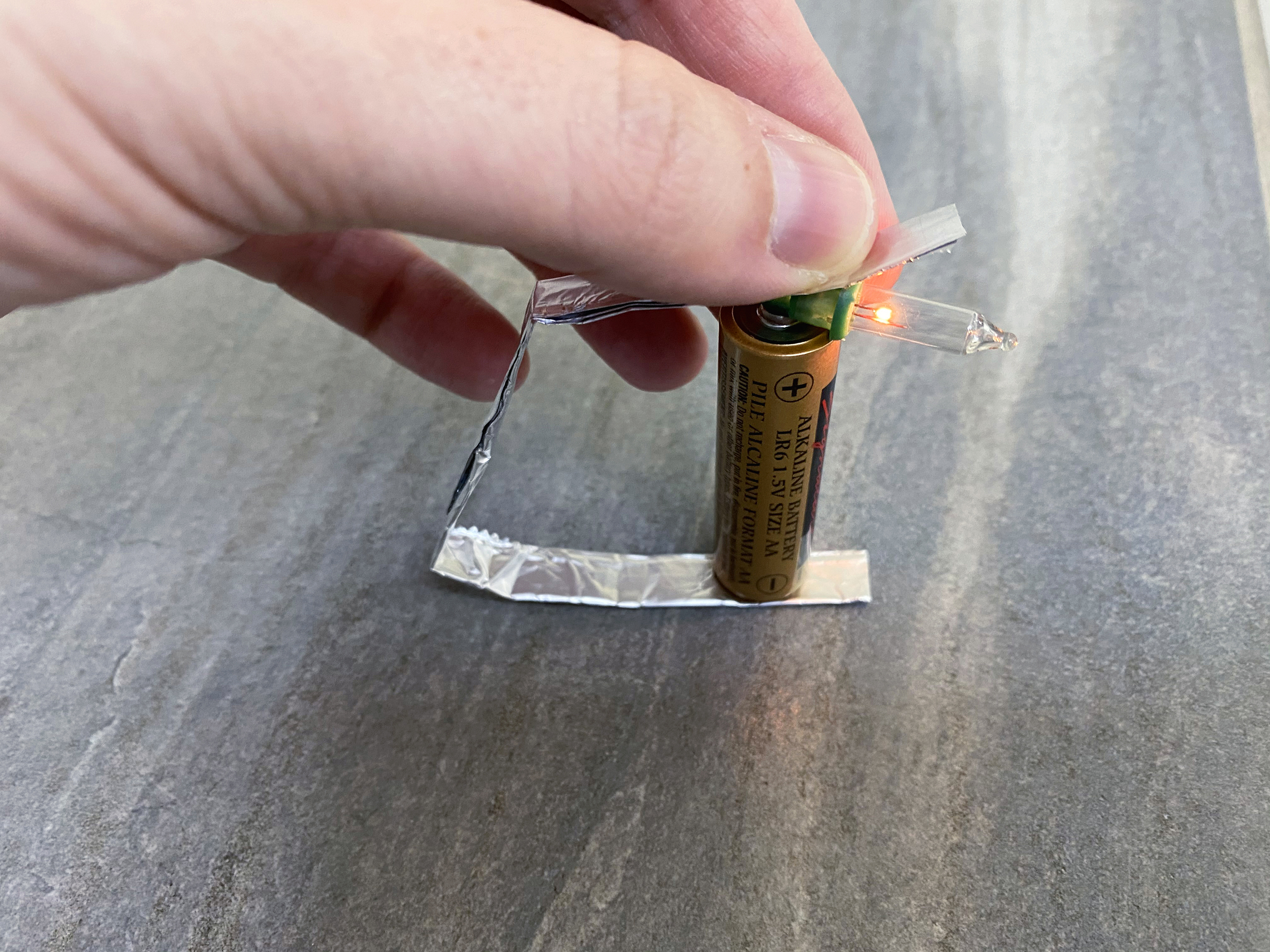It doesn’t take a lot to make a simple electrical circuit. All you need is a power source (batteries work great), something to power on (a small lightbulb, such as a Christmas light or flashlight bulb), and a conductor (such as foil, metal paperclips, binder clips, or electrical wire) to carry the electricity from the power source to the light bulb. If you are using foil as your conductor, try rolling or folding it into a long strip.
 Fun Fact:
Fun Fact:

